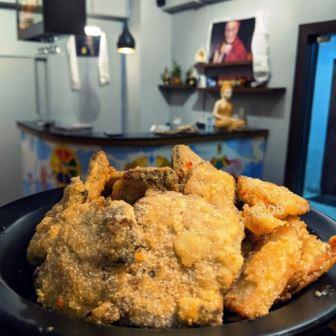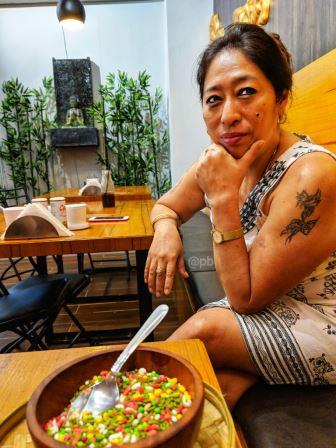Food was something to be savored and cherished. That’s how it was for me till few years back when I started scratching the surface of it to find out a little more about it. And that led me to explore beyond the obvious and tried & tested. Hence, a couple of years back, when my colleague suggested a lunch outside on a working day, I explored and chose a joint serving Nepalese (or Nepali) food and not very far off from my working area in Sector V in Kolkata.
But as I decided to call an Uber, I was told by Zomato or Google (I don’t remember precisely) that the place named Thakali, the only place serving Nepali food, has closed down in Salt Lake. Inability to have it aroused curiosity to understand what have I missed. Till then, never ever thought there can be Nepali cuisine. Must be something similar to what we have since rice and dal (pulses) are intrinsic part of it. Or maybe it is all about Momos and noodles.
Geography has always shaped the culinary practices in any area and Nepal is no different. Land-locked between India and China, its cuisines may often resemble food from these places. But that’s only apparently and more so because we are more used to cuisines from these places. In fact, it will be wrong to generalize and say Nepali Cuisine; just like there is nothing like an Indian Cuisine. With landscapes varying from fertile plains in the south to highlands in the north and with a large number of ethnic groups, food habits within Nepal vary vastly.
While Khas people have food similar to ones we are used to like daal-bhat- tarkari (Pulses- Rice- and vegetables), the Himalayan cuisine has similarity to the ones we associate as Tibetan food like Thukpa, Momo, soup and so on. But in between lay a terrain which is transitional between Himalayan and lowland, called Thakali; a cuisine that Thakali people have, people from Thak-Khola valley. And the fact that I have missed having the food at this place called Thakali started biting me even more since amongst various Nepalese cuisines, it was slightly more popular since this valley was part of the trade routes and people staying in inns there were served food by Thakali people.
On a FB post from someone inquiring about Nepali food, I had stated that Thakali was there but has closed down. Against my comment, someone (the lady herself) wrote, it will soon re-open. Wow!!! And I kept waiting. And when it finally opened at a location far off from its earlier one, it took me quite a few months to finally be there. But I can’t be there without the gracious presence of the person behind it, and hence checked with her about her availability since I know very little about this cuisine and need guidance.
And it was magic to my ears when she suggested Sel Roti. It is a delicacy common in festivals and ceremonies in Nepal – a dense, rice flour-based doughnut. The batter is made up of rice flour, milk, water, oil, cardamom, cloves and sugar. The batter is dropped into oil in the shape of a ring, deep fried and then set out to cool. Soft like a pillow, super fatty with a touch of sweetness it can’t be equated to any other similar food to explain to someone who hasn’t had it. But it was the pairing of it with Choila that made a deadly combination – pour a spoonful of the hot choila in your mouth – the sugary fluppy sel roti balances the heat of choila to make a jugalbandi which many classical exponents may struggle to create. Choila is a salad made with smoked meat (chicken or pork) and wonderfully balanced with salsa. I chose the chicken one since my next order is going to be a pork thali.
While rice is expected in a Nepali thali, what was a welcome surprise was the ghea (clarified butter) served with it. It was a nicely laid out balance between simple attractive accompaniments and bowls containing tempting curries to be had with rice. Kalo dal (black lentil) and Aloo Dum Nepali styled (dry potato curry with Nepali spices) was again such a nice balance between sublime dal perfectly blending with the spiciness of the dry potato curry. Unlike in many Bengali cuisine, the Rai Saag (mustard leave) is kept simple here, merely boiled with limited addition of any spices, and the simple Til ko achaar (sauce made with sesame seeds) reveals the simplicity yet freshness of the meal. On the other side of the customary salad of onions was pickled radish (Mula ko achar) and it was indeed reincarnation of radish and further ahead was Sadeko Gundruk (fermented and dried saag).
With taste buds satiated with a platter so similar to what we mostly have yet so subtly different and stomach feeling full (with age catching up, it gets full so quickly), it was time to pour the tempting sungur ko masu ra rayo ko saag on the steamed rice. A spoonful of it in the mouth re-energized the senses and recharged the soul. “Can I have some more rice please?”. Just a while back I was feeling full though. Yet again a preparation, very similar to what we have yet so different in its taste, this pork curry with mustard greens is something one shouldn’t miss. The curry itself blew me out – well the succulent pork pieces squared off the devastation. While I personally prefer slightly less fat in pork pieces, but this was so well done and so succulent, that I felt a few pieces more in the bowl would have still left me wanting for more. I am through with my meal; but I just scratched the surface of what all is possible at Thakali. “How soon” is the only thought I had as I walked out from Sikkim House (Thakali is located inside the complex housing Sikkim House in Kolkata in Middleton Street).
It was just in time for me that some of the members of The Calcutta Porkaddicts chose the same venue for one of the meet. And it was a wonderful combination – to continue my exploration of Nepali cuisine and focused completely on Pork, one of the most popular meat in the cuisine.
In-form Srikanth or Sehwag meant pulsating beginning to an innings and taking the charm out of the rest of the good batting to follow. That’s what precisely happened when the evening began with Pork & Chives Momo. Assuming you don’t know the owner of this place, you will surely utter that the Momo was queen of all momos you have had. And no wonder, Doma Wang is also known as the Momo Queen in this city with all her years of experience refining this art and creating the famed brand “Blue Poppy” brand. While Momo associates itself more strongly with Tibetan food, but dumplings in general have different names and forms in many other countries as well. Of course, with Tibet on its northern border, the Momos of this region is bound to be similar. The medley of chives with minced pork was eclectic paired with the Dalle and green chilli chutneys. This sauce combo is surely not for the mild-hearted.
Pork, mixed with a set of spices are first roasted and then sliced. Coated with a batter of semolina and rice flour, it is the deep fried to create the next wonder item, crispy fried pork. The outer coating reminds of so many similar savories in Bengali food, but having roasted pork inside was a maiden experience. While in a couple of pieces, in certain portions, I felt the meat inside was slightly stiff, can’t say whether it was by design or by chance. On a rare occasion i found the sweet chili sauce to be naturally complimenting some starter. But it was a start of a great innings and asking rate for the batsmen down below in the order is now a lot low.

Pork Ribs is probably one of the most common pork items that is savoured. But when you see large volumes of it coming over, it is difficult to control your calm self. The beauty of this item is that while it looks often the same, it is the masala mix that makes one different from the other. And we are in Thakali – ought to be a Nepali spice mix. The mix is something that is customized in-house and while that was the yummy part of this dish, it had a greater proportion of fat and is a chart-buster for those who prefer that way.
The main course was Sweet and Sour Pork Curry with Gobinda Bhog rice, a fusion of Bengal and China, bypassing Nepal. A dish that Doma Wang loves to recreate the way her father used to make it often at their home. For those who love sweet curries, it is surely will go well.

If one has a noodle factory and a father who has great passion for cooking, expertise in noodles is a natural outcome. The Pan Fried noodles indicated to the existence of that rich legacy. And with generous portions of pork meat and pork fat in the gravy so wonderfully balanced with greens I tried hard to figure out which one is more enriching – the gravy of the pan fried noodles. Concluded that they are like model married couples – can’t isolate who contributes to what to make such a successful marriage but the end outcome is is a memorable happy marriage.
The Pan fried Pork noodles could have been a dish by itself; but when the red tangy gravy of the Pork Shapta (at times also referred to as shaptra) flowed surreptitiously into it, it spiced up the taste to new heights.
Boiled pieces of pork (or chicken) is pan fried with slivers of garlic and ginger and other ingredients like onions, tomatoes and so on makes for apparently such an easy dish yet leaving you want for more.
Barely could I sit straight after such a meal. Satisfied to the core, I also felt I have, at least, gone beyond scratching the surface of Nepali cuisine to taste some of the items that apparently seems similar to ones I have had, yet nicely customized to make them distinctly Nepali.
As you wait for the invoice, you may quickly browse the counter for some innovative pickles and sauces laid out there and I succumbed to my temptation of buying a chicken pickle, which has now replaced by chili pickle, every time I have aloo paratha at home.

The colourful mouth freshener is the last bit that you can pick up on your way out. But I chose to spend a few minutes with the lady behind Blue Poppy and Thakali – Ms Doma Wang herself. And her warmth and hospitality is like a soul-freshener. Hence I decided to give the mouth freshener a skip.













